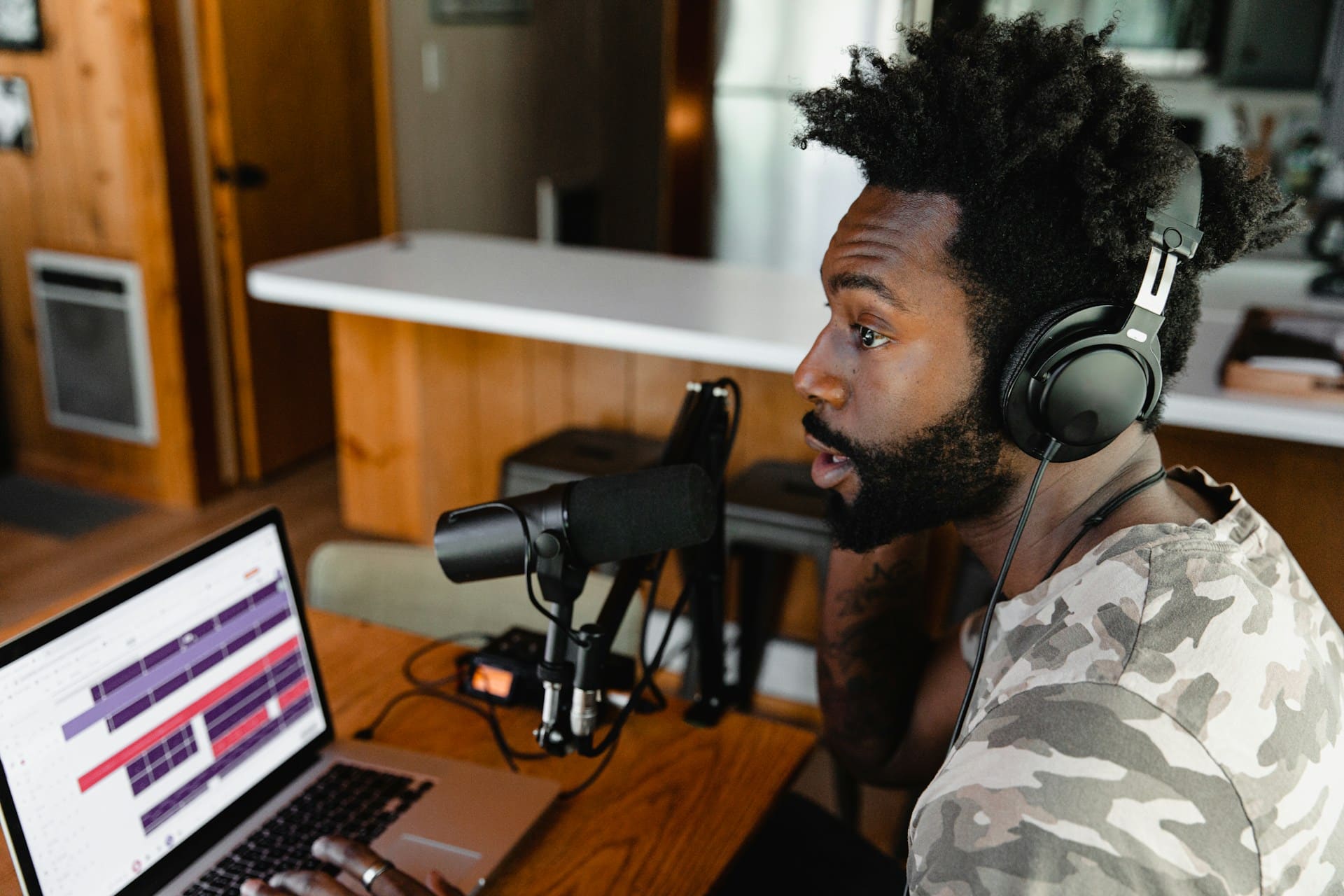Artistic pursuits have always been a way for humans to express their innermost thoughts, feelings, and ideas. Artists across all mediums – be it music, painting, sculpture, or literature – have typically relied on their natural talents, training, and experiences. However, in this digital age, there’s been a new player in the creative process: artificial intelligence.
The use of AI in the creative sector is not about replacing human artists but enhancing their creative processes. Artists are now using AI to generate new ideas, speed up their process, and even create art that would have been impossible to make by human hands alone. In this article, we’ll explore how AI is being used in two of the most universally shared forms of creative expression – music and art.
Cela peut vous intéresser : Check your addresses with a free and effective mail tester
AI in Music Production
Making music is a complex process that involves composing, performing, recording, and producing. For many years, these tasks were completed solely by humans. However, AI is now playing a significant role in music production, helping artists to streamline their processes and create innovative compositions.
AI algorithms can analyze a vast amount of music data, learning patterns and styles from different genres, periods, and artists. This analysis can then be used to generate music, offering artists a fresh source of inspiration and helping them to break out of their creative ruts.
Cela peut vous intéresser : 5 tools for creating a healthcare chatbot without any programming knowledge
Platforms such as Amper Music and AIVA utilize AI to create music that can be tailored to specific moods, styles, or durations. This can be particularly useful for filmmakers, game developers, or advertisers, who often need custom-made music for their projects.
AI is also being used to enhance music production processes. Tools like LANDR use AI to master tracks, analyzing the song’s elements and making adjustments to optimize the sound quality. This can save artists a significant amount of time and resources, allowing them to focus on the creative aspects of their work.
AI in Visual Art Creation
Visual art is another field that’s being transformed by AI. While the act of painting or sculpting requires a physical touch, AI is helping artists to experiment with new styles and techniques, push the boundaries of their creativity, and reach new audiences.
One of the most notable examples of AI in art is the use of Generative Adversarial Networks (GANs). GANs consist of two AI models – a generator and a discriminator. The generator creates images, and the discriminator evaluates them based on a dataset of existing artworks. The generator then fine-tunes the images based on this feedback, resulting in original pieces of art.
The auction of the AI-generated artwork “Portrait of Edmond de Belamy” for $432,500 at Christie’s in 2018 highlighted the potential of AI in the art world. Created by the collective Obvious using a GAN, the artwork sparked a wave of interest in AI-generated art.
AI is also being used to create digital art, with platforms like DeepArt and Prisma allowing users to apply various artistic styles to their photos. This has democratized the art-making process, enabling even those without traditional artistic skills to create beautiful pieces of art.
AI in Art and Music Curation
The curation of art and music is a crucial aspect of the creative industry, ensuring that audiences are exposed to works that they’ll enjoy. With the vast amount of content available today, AI is playing a crucial role in personalization and discovery.
Music streaming services like Spotify and Apple Music use AI algorithms to curate personalized playlists for their users. These algorithms analyze users’ listening habits, preferences, and even mood to suggest songs that they might like. This not only enhances the listener’s experience but also helps emerging artists to reach new audiences.
In the art world, museums and galleries are using AI to curate exhibitions. For instance, the Tate Britain used AI to curate its “Recognition” exhibition in 2016, where an AI algorithm matched contemporary news images with artworks from the Tate’s collection.
AI is also being used to analyze and interpret artworks. Google’s Art and Culture app, for instance, uses machine learning to provide users with detailed insights about various artworks, helping them to engage with art on a deeper level.
AI as a Collaborator in Art and Music
AI’s role in art and music is not limited to being just a tool; it’s also emerging as a collaborator. AI can contribute to the creative process by generating ideas, suggesting changes, and even creating parts of the work itself.
In music, artists are using AI to compose songs. For instance, singer Taryn Southern’s album “I AM AI” was composed entirely using AI. The AI software provided the basic melodies and chords, which Southern then arranged and added lyrics to.
In visual art, artists are using AI to generate parts of their artworks. For instance, artist Anna Ridler used AI to create “Mosaic Virus,” a moving image artwork. She fed an AI algorithm thousands of images of tulips, which the algorithm used to generate a unique animation of blooming tulips.
The use of AI in art and music is not without its challenges and controversies. Issues such as copyright, authenticity, and the role of human creativity are hotly debated. However, it’s clear that AI has the potential to significantly enhance the creative process, providing artists with new tools, ideas, and possibilities. We can look forward to a future where art and music are shaped by the collaboration between human creativity and artificial intelligence.
Impact of AI on Creativity and Originality
While AI’s role in enhancing the creative process in art and music cannot be understated, it’s worth discussing the implications it has on creativity and originality. The interplay between AI and human impulse in artistic creation raises questions about the nature of creativity.
In music, AI can generate an original composition based on analyzed patterns from a vast collection of music. While this offers a fresh source of inspiration, some argue that it dilutes the personal touch and expression that comes with human creation. It’s important to remember, however, that AI-generated music often requires human involvement in selecting and arranging the generated content. Musicians still inject their artistic vision into AI-generated drafts, ensuring the final product retains a human touch.
The same principle applies to visual art. While AI can generate artwork and help artists experiment with new styles and techniques, the artist’s creative input is still a crucial part of the process. They decide the parameters for the AI, choose and refine the output, and often add their own touches.
The debate around AI and originality is complex and ongoing. AI is reshaping the idea of what it means to be creative, encouraging artists to rethink their processes and the nature of artistic creation. The originality in AI-assisted art and music does not solely stem from the AI itself, but from the new ways artists are using this tool to express their creativity.
Conclusion: AI – A Catalyst for The Future of Art and Music
As we look ahead, it is clear that AI is set to play an increasingly significant role in the creative process of art and music. From aiding in music production and visual art creation, to curating art and music based on individual preferences, to its emergence as a creative collaborator, AI is revolutionizing the creative landscape.
While the discussion around AI’s impact on creativity and originality continues, it’s undeniable that AI offers a wealth of opportunities. Artists can harness AI’s potential to push the boundaries of their work, experiment with new styles, and create art that was once thought impossible.
Critically, the use of AI in art and music does not signify the end of human creativity but serves as an enhancement. The human touch is still indispensable in the artistic process. AI functions as a tool and collaborator, providing artists with fresh inspiration and allowing them to reach new creative heights.
As we move forward, we can expect to see more innovative and exciting developments in AI-assisted music and art. It’s a future full of promise, with AI and human creativity working hand in hand to create extraordinary works of art and music. In the end, artificial intelligence is not about replacing human creativity but augmenting and elevating it, heralding a vibrant future for music and art.






